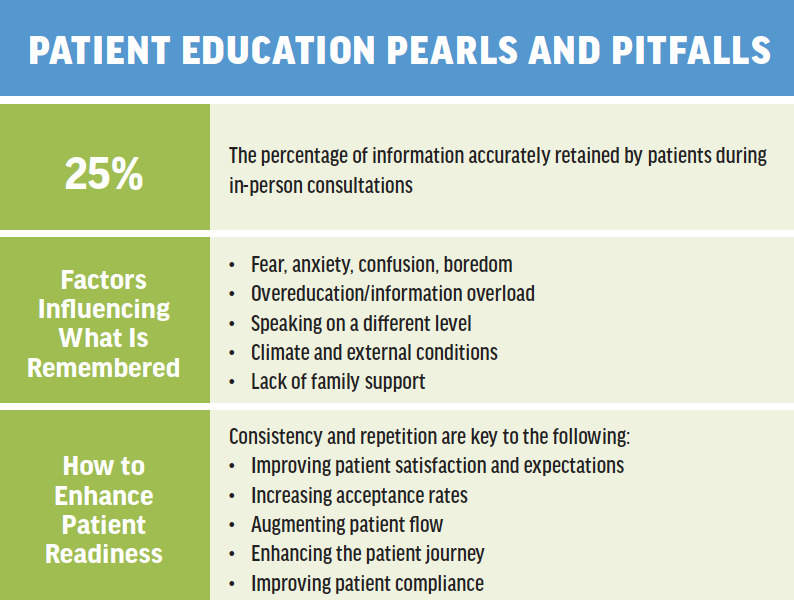
The COVID-19 pandemic transformed the practice experience for ophthalmic patients and practice staff. Practices were forced to implement systems such as virtual appointments and drive-through IOP checks that might otherwise have been considered only as part of a 5-year plan. Patients became keenly aware of their health concerns, and everyone became hyper-focused on safety.
Ophthalmology practices should aim to make patients feel awed by their experience in the office. A feeling of awe can enhance a person’s ability to think critically and reduce symptoms of posttraumatic stress. When people feel awe, they tend to feel happier, healthier, and more connected to those around them. Disney World, for example, provides awe-inspiring experiences for people of all ages, which is why many return there repeatedly.
The pandemic made it more important and challenging than ever to optimize the patient experience at every touchpoint. Face masks that cover smiles, shields that create a barrier between patients and staff, and anxieties around social interaction can make connecting with patients a challenge.
Virtual consultations are one way to get around these barriers to give patients an awe-inspiring experience with your practice (see Types of Virtual Consultations).
Types of Virtual Consultations
Virtual meetings with patients can be used to facilitate a variety of appointments, including the following:
- New patient greetings
- Consultations
- Appointment preparation
- Surgical scheduling
- Pre- and postoperative instructions that include family members and caretakers
- Examinations
The Benefits of Virtual Consultations
A greater volume of appointments. Virtual meetings offer an opportunity to increase revenue and patient volume without impairing workflow in the clinic. Scheduling benefits include greater flexibility for appointment times and decreased wait times in the office. The pool of potential patients can also broaden because virtual appointments can remove barriers associated with geographic location, such as transportation and traffic.
Enhanced patient education. Virtual consultations allow patients to learn about their health care needs. They do not remember everything they are told during their interactions with doctors and staff. External distractions or formulating responses can affect their ability to digest information. In my experience, patients generally forget about 50% of the information they receive, and only half of that 50% is accurate. In general, patients take home about 25% of the information they receive during a consultation (see Patient Education Pearls and Pitfalls).

Patient readiness can improve clinic and surgeon efficiency and enhance and validate the patient’s expectations. A patient who arrives at the office well informed and already engaged with the practice is more likely to have a positive journey. More importantly, a prepared patient tends to be happier and more compliant.
Improved patient experience. The virtual consultation is a solution to the challenges of in-person office visits that prioritizes the patient. Other forms of digital correspondence, such as text messaging and email, cannot convey tone, emotion, facial expression, or body language accurately. Digital correspondence simply cannot replace eye contact and face-to-face connection.
Best Practices for Virtual Consultations
Get comfortable. People often feel uncomfortable using virtual meetings. We’re not accustomed to seeing our faces as we interact with each other, but seeing yourself can be a game-changer. The camera pushes us to smile more and monitor our facial expressions and body language. Grab a beverage and invite your patient to do the same.
Prepare. Practice using your chosen virtual consultation platform with staff, family, and friends. Rehearse your script. Get familiar with how the platform functions. Prepare for a virtual meeting. Make sure the area you use is free of distractions and background noise. Turn off computer alerts and put your phone on vibrate. Look at your background; make it neat and organized. Check your internet connection, microphone, and camera to ensure they are in good working order. Whether you are in scrubs, a lab coat, or business attire, look your best.
Be prompt. Waiting too long for a virtual meeting to start with no communication makes people wonder if they did something wrong or if the connection is not working. Have someone call ahead to prepare the patient for their virtual visit to eliminate wait times and confusion. Set the stage for the appointment so that expectations about how the appointment will go are clear.
Ask for feedback. Survey patients about their experiences with virtual visits. Use this information to enhance the experiences your practice delivers.
Ways to Use a Virtual Platform
Virtual platforms function best when there is back-and-forth, but there are other approaches. Short, prerecorded videos and webinars can be useful. Links to them can be emailed and personalized, or the offerings can simply be posted on your website. Short welcome videos are a nice option for patients and staff who are uncomfortable with virtual technology. They can still be welcomed into your home and see your smiling face without having to navigate the virtual consultation. A step-by-step video tour can show a patient what to expect during a visit.
The answers to frequently asked questions can also be prerecorded. These can address what to expect, how to find the patient portal, and questions about specific procedures and testing.
Think Outside the Box
Don’t assume that your patients don’t want to use new platforms but understand that some will prefer traditional appointments. Embrace change to create a practice that is accessible to everyone.




